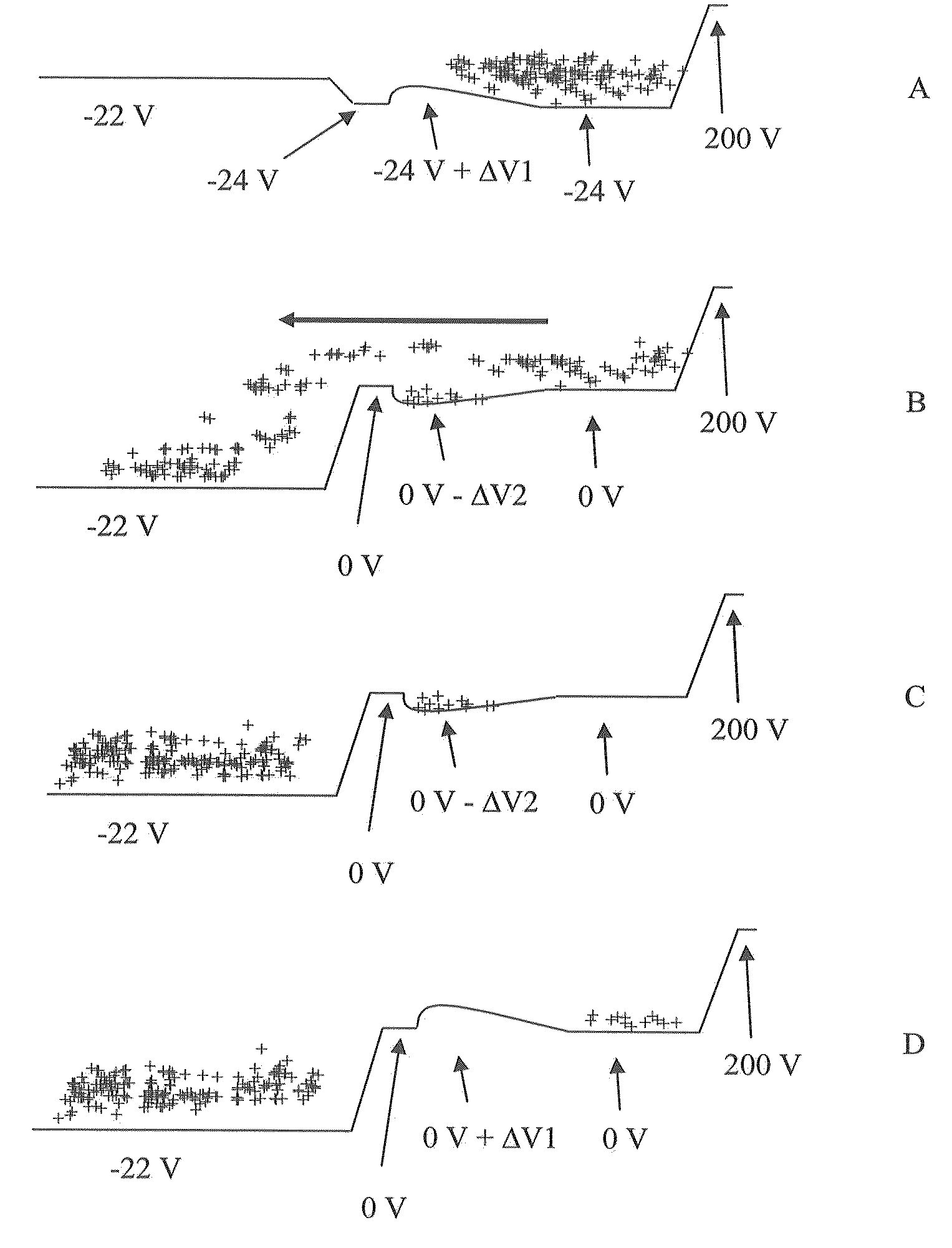Method and apparatus for reducing space charge in an ion trap
a technology of space charge and ion trap, which is applied in the direction of mass spectrometer, isotope separation, particle separator tubes, etc., can solve the problems of increasing the need for handling the associated increase in space charge, the distortion of the mass spectrum obtained from the trapped ions becomes distorted, and the need for handling the increased space charge becomes more critical. , to achieve the effect of reducing space charge interferen
- Summary
- Abstract
- Description
- Claims
- Application Information
AI Technical Summary
Benefits of technology
Problems solved by technology
Method used
Image
Examples
examples
[0071]Experimental. All experiments are carried out on a modified 4000 Q Trap (mass spectrometry system, from Applied Biosystems, Foster City, Calif., USA), using a short linear ion trap (SLIT) situated between the Q3 rod-set and the exit lens. This is illustrated in FIG. 1, along with the potentials applied to each optic during the fill step. The potential applied to the auxiliary electrode is 200 V during this step and produces an additional potential of ΔV1 along the axis of the SLIT. The ions are denoted by the +'s. During the filling of the SLIT, the potentials along the length of the ion path are adjusted to admit as many ions as possible into the SLIT. After the SLIT has been filled, the rod offset on the SLIT is raised to 0 V while the potential on Q3 is left low; see FIG. 2. This prevents energetic ions that are remaining in Q3 from transferring into the SLIT during the scanning out step. The ions are scanned out of the SLIT using the technique of mass selective axial eject...
PUM
 Login to View More
Login to View More Abstract
Description
Claims
Application Information
 Login to View More
Login to View More - R&D
- Intellectual Property
- Life Sciences
- Materials
- Tech Scout
- Unparalleled Data Quality
- Higher Quality Content
- 60% Fewer Hallucinations
Browse by: Latest US Patents, China's latest patents, Technical Efficacy Thesaurus, Application Domain, Technology Topic, Popular Technical Reports.
© 2025 PatSnap. All rights reserved.Legal|Privacy policy|Modern Slavery Act Transparency Statement|Sitemap|About US| Contact US: help@patsnap.com



